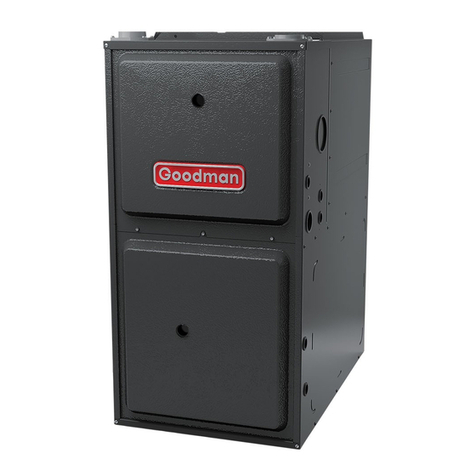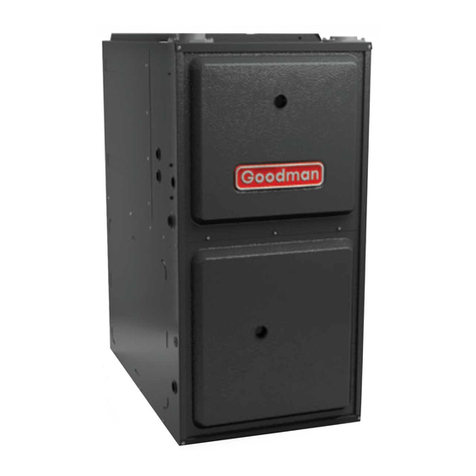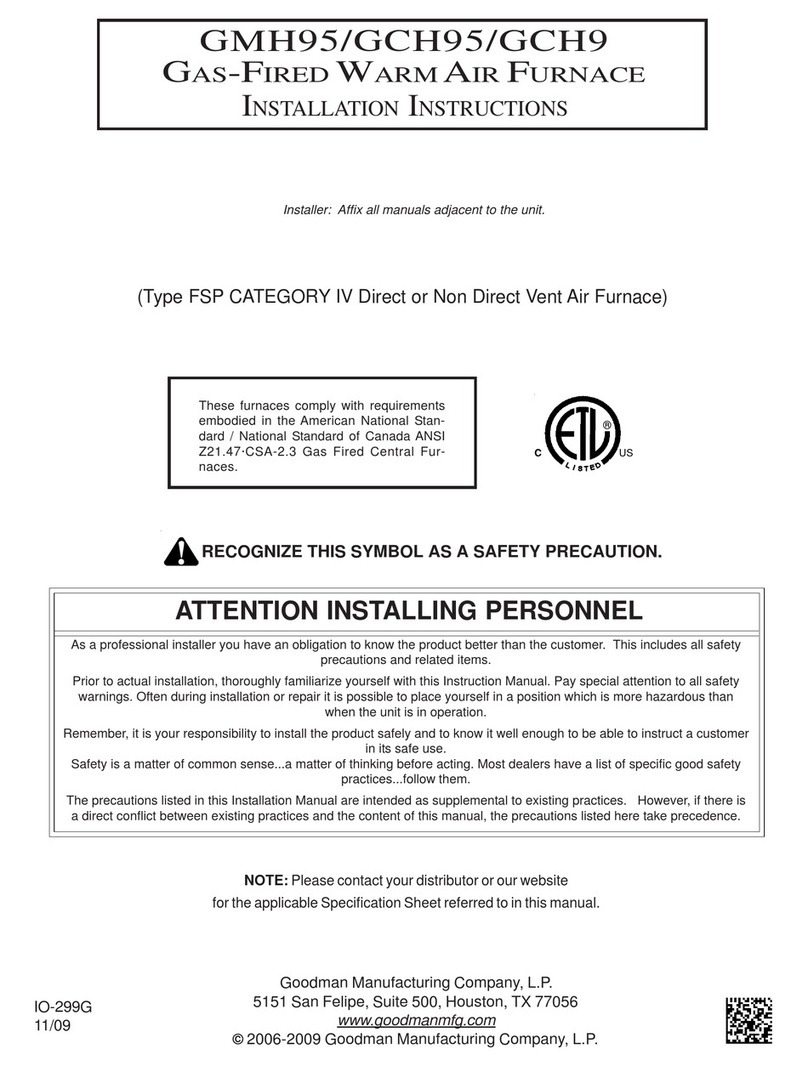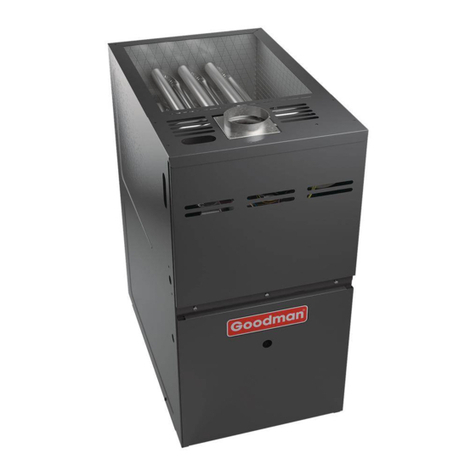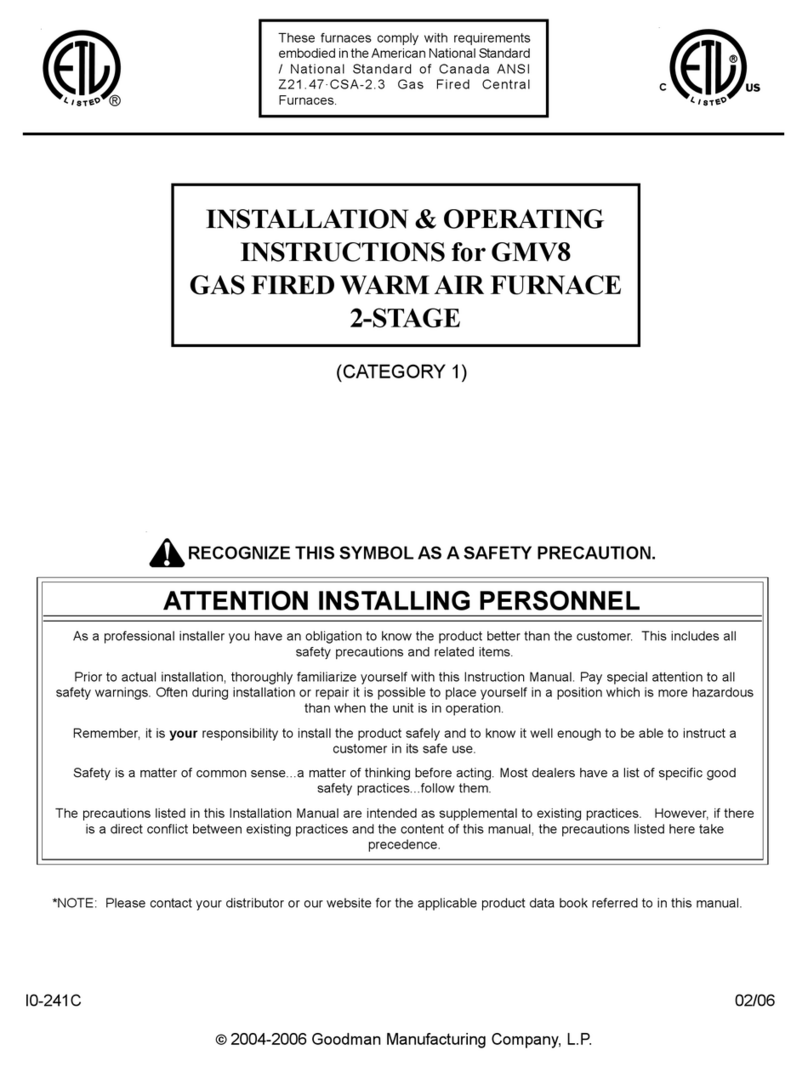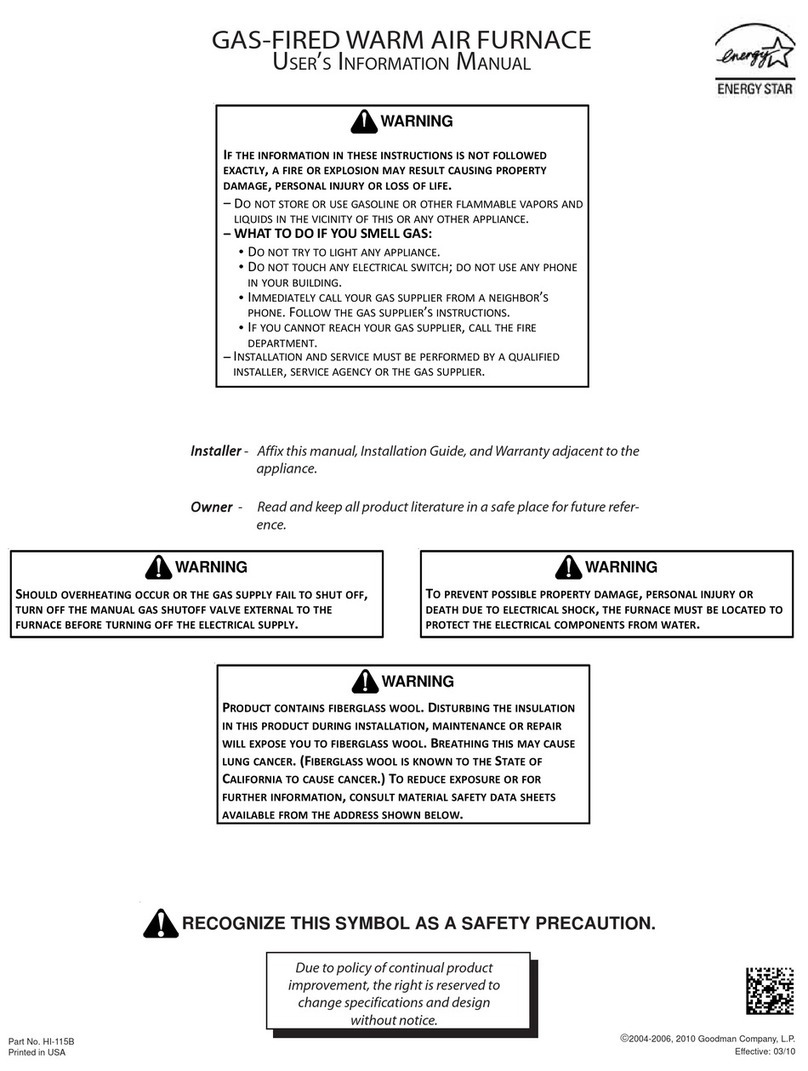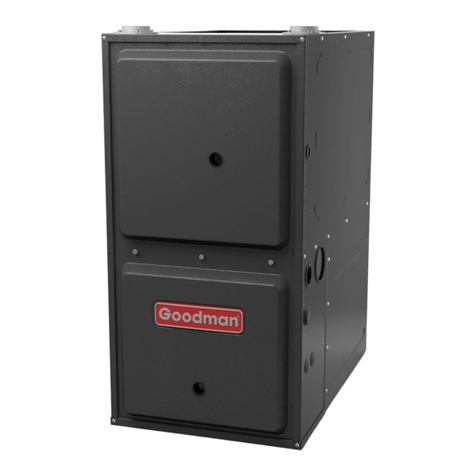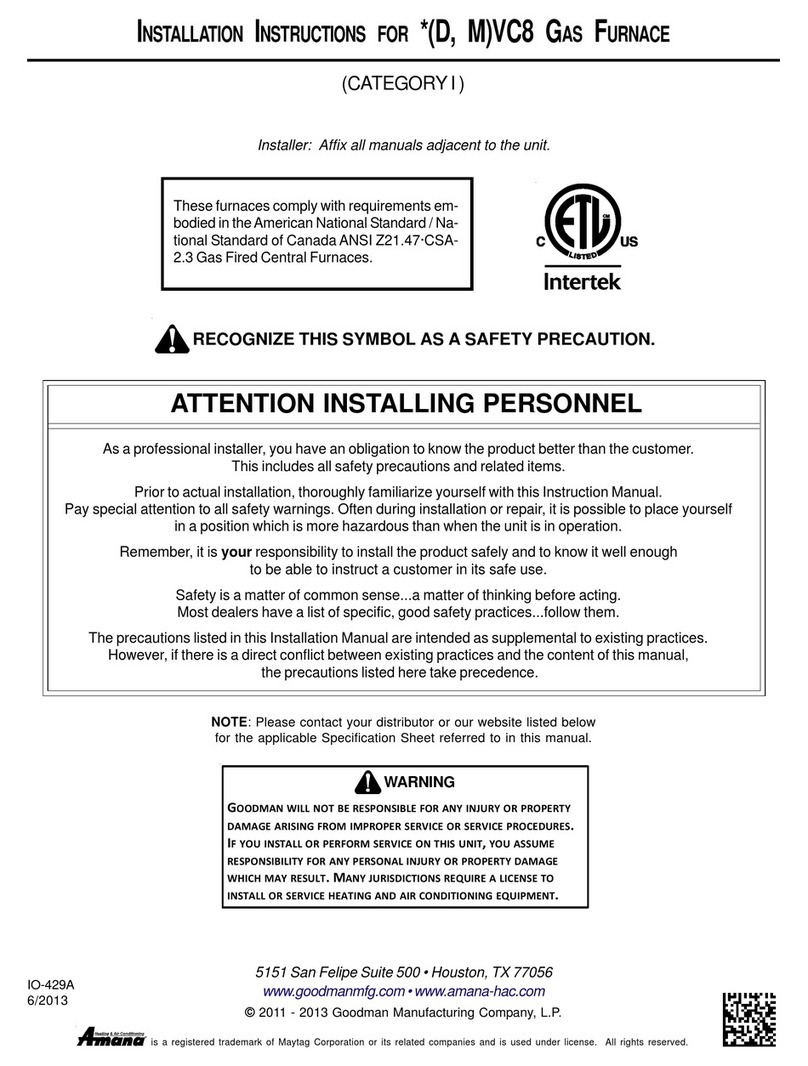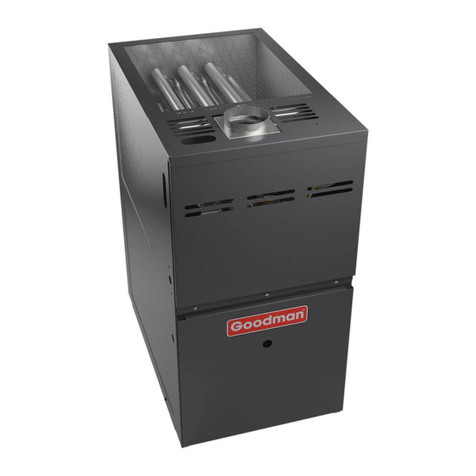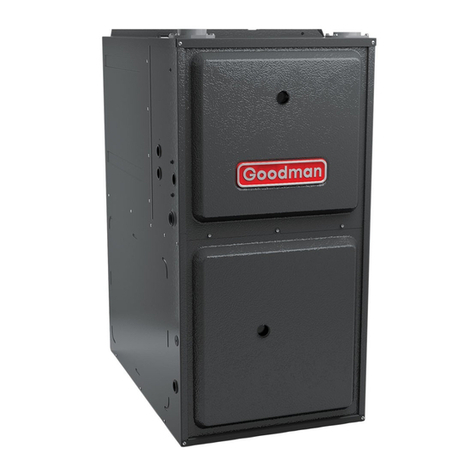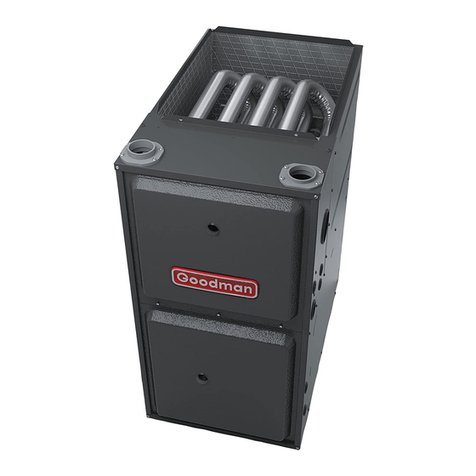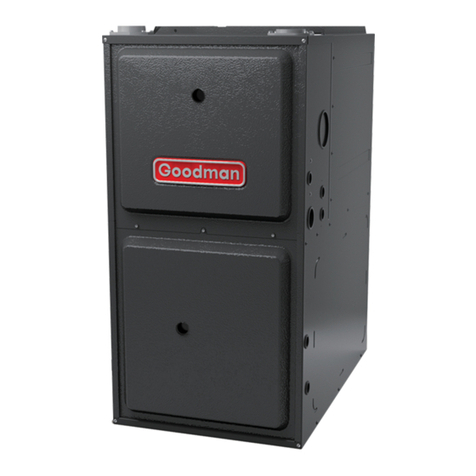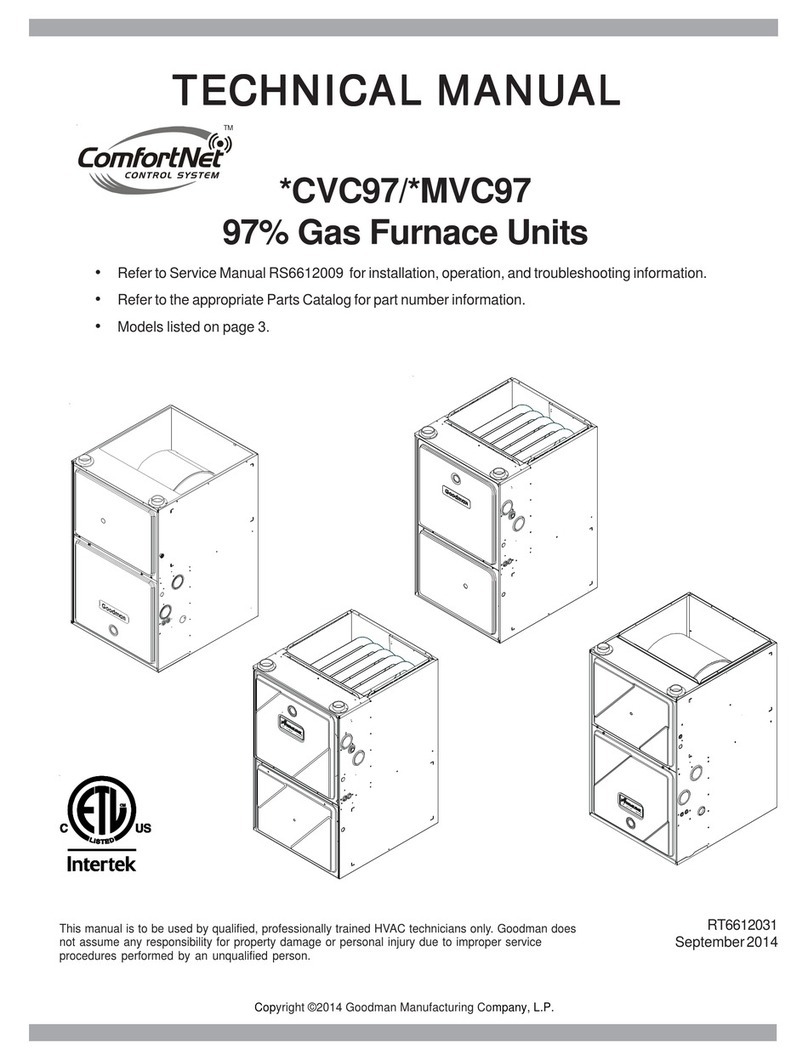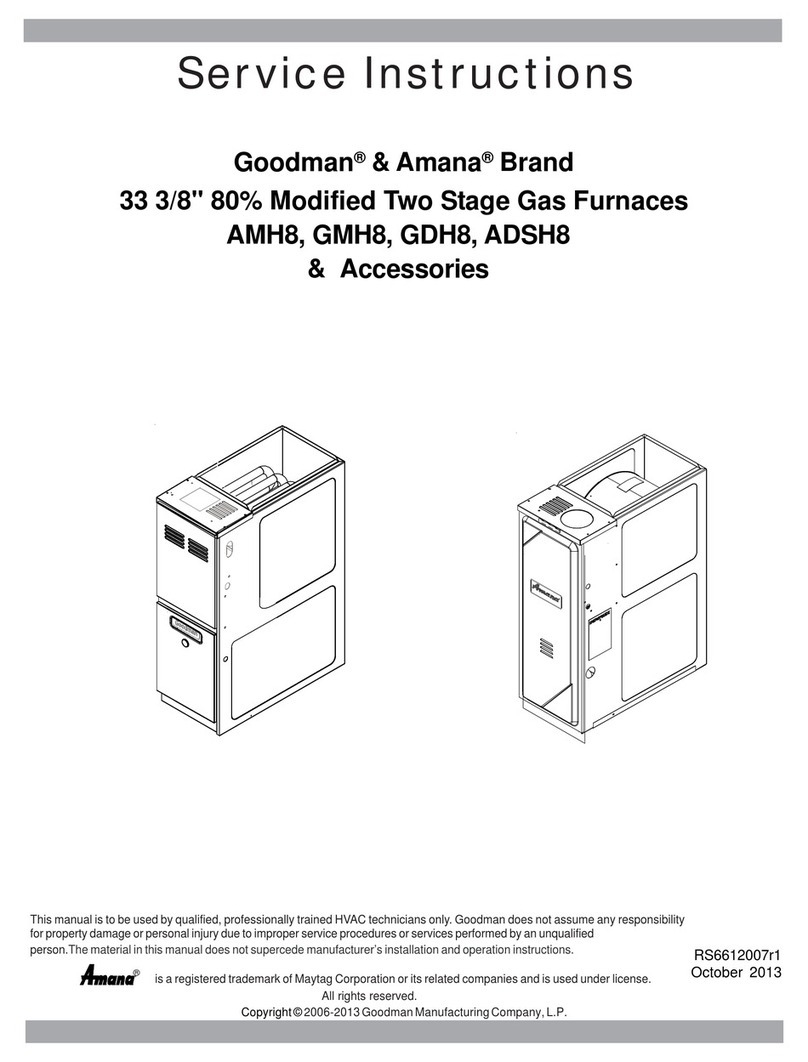
4
PRODUCT DESIGN
NFPA 54/ANSI Z223.1 - latest edition. In Canada, the fur-
nacesmust be ventedinaccordancewiththe National Stan-
dardofCanada, CAN/CSA B149.1 and CAN/CSA B149.2-
latesteditions and amendments.
NOTE: Theverticalheightof the Category I ventingsystem
must be at least as great as the horizontal length of the
ventingsystem.
Accessibility Clearances (Minimum)
Unobstructed front clearanace of 24" for servicing is rec-
ommended.
SW B
1036 11
* 24" clearnace for serviceability recommended.
MINIMUM CLEARANCE TO COMBUSTIBLE MATERIALS - INCHES
** Single Wall Vent (SW) to be used only as a conncetor.
Refer to the venting tables outlined in the Installation Manual for
additional venting requirements.
Vent
Sides TopRear Front*
Note: Inall cases accessibility clearance shall take prece-
denceover clearancesfromtheenclosure where accessibil-
ityclearancesaregreater. Alldimensionsaregivenininches.
High Altitude Derate
Whenthis furnace is installedat high altitude, theappropri-
ate High Altitude orifice kit must be installed. This is re-
quiredduetothenatural reduction in the density of boththe
gas fuel and combustion air as altitude increases. The kit
will provide the proper design certified input rate within the
specifiedaltituderange.
2000 3000 4000 4500 5000 6000 7000 8000
US BURNER
ORIFICE 44/55 44/55 45/56 45/56 46/57 47/58 47/58
CANADA BURNER
ORIFICE 44/55 47/57
HA-02 HIGH ALTITUDE CONVERSION KIT REQUIRED
Tabled data is based upon the furnace input being reduced for altitudes above sea level. U.S. 4% per 1,000 feet.
Canada 10% derate for 2,000-4,000 feet.
ELEVATION ABOVE SEA-LEVEL (FEET)
INPUT PER BURNER - 22,500 BTUH NATURAL GAS / 20,000 BTUH L.P.
High altitude kits are purchased according to the installa-
tionaltitudeandusageof eithernatural orpropanegas.Refer
tothechartaboveforatabular listing of appropriate altitude
rangesandcorrespondingmanufacturer’shighaltitudeNatu-
ralGasandPropaneGaskits.For a tabular listing of appro-
priatealtituderangesandcorrespondingmanufacturer'sHigh
Altitude Pressure Switch kits, refer to either the Pressure
Switch Trip Points & Usage Chart in this manual or the Ac-
cessoryCharts in Service Instructions.
GeneralOperation
TheG*S8furnaces are equipped with anelectronicignition
deviceused to light the burners and an induced draft blower
to exhaust combustion products.
An interlock switch prevents furnace operation if the inner
blowerdoor is not inplace. Keep the blower access door in
placeexceptfor inspection and maintenance.(See illustra-
tion on pages 5 and 6.)
This furnace is also equipped with a self-diagnosing elec-
tronic control module. In the event a furnace component is
notoperating properly, the controlmoduleLED will flashon
and off in a factory-programmed sequence, depending on
theproblemencountered. This light canbe viewed through
theobservationwindowin the blower access door.Referto
theTroubleshootingChartforfurther explanation oftheLED
codesandAbnormal Operation - Integrated Ignition Control
section in the Service Instructions for an explanation of the
possibleproblem.
Theratedheatingcapacityof the furnace should be greater
thanor equal to the total heat lossof the area to be heated.
The total heat loss should be calculated by an approved
methodorinaccordance with “ASHRAE Guide” or “Manual
J-LoadCalculations” published by theAirConditioningCon-
tractors of America.
*Obtain from: American National Standards Institute 1430
BroadwayNewYork,NY10018
LocationConsiderations
• The furnace should be as centralized as is practical
with respect to the air distribution system.
• Donotinstallthefurnacedirectly on carpeting, tile, or
combustiblematerialotherthanwood flooring.
• When installed in a residential garage, the furnace
mustbe positioned so theburnersandignitionsource
are located not less than 18 inches (457 mm) above
the floor and protected from physical damage by ve-
hicles.
Notes:
WARNING
TO PREVENT POSSIBLE PERSONAL INJURY OR DEATH DUE TO ASPHYXIATION,
THIS FURNACE MUST BE CATEGORY IVENTED. DO NOT VENT USING
CATEGORY III VENTING.
CategoryI Venting is ventingat a non-positive pressure. A
furnace vented as Category I is considered a fan-assisted
appliance and the vent system does not have to be “gas
tight.” NOTE: Singlestagegasfurnaceswithinduced draft
blowers draw products of combustion through a heat ex-
changerallowing,in some instances, common ventingwith
naturaldraftappliances(i.e.waterheaters). All installations
mustbeventedinaccordancewithNationalFuelGasCode
